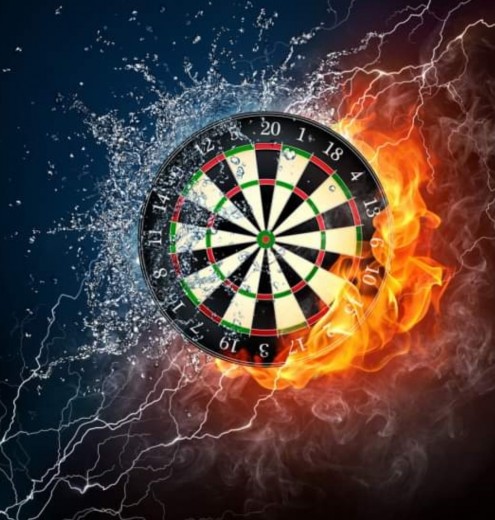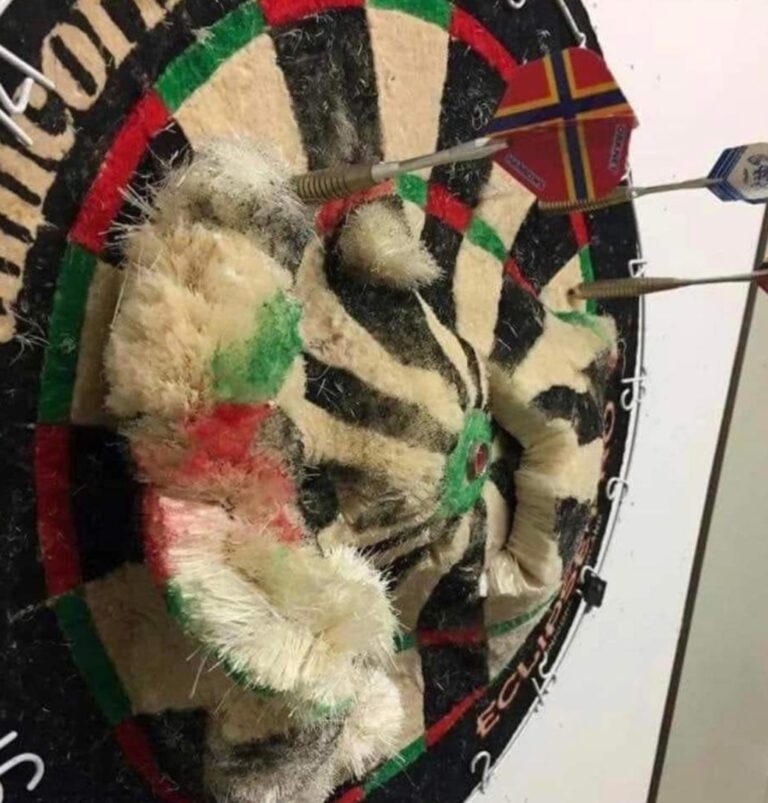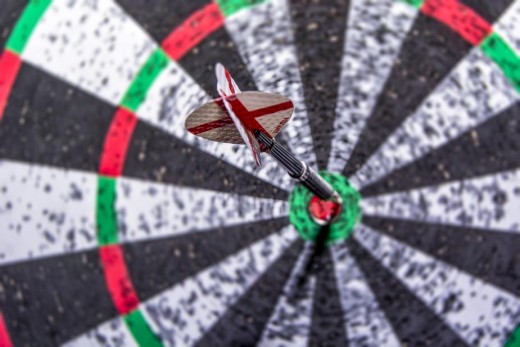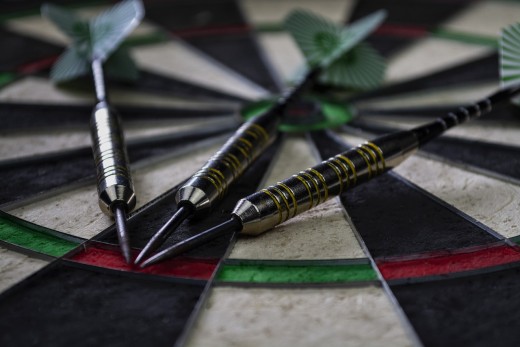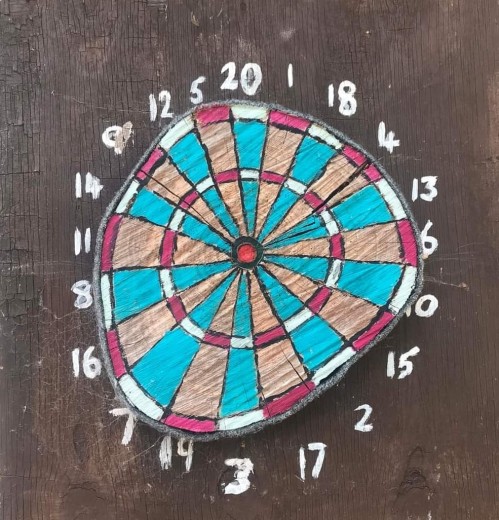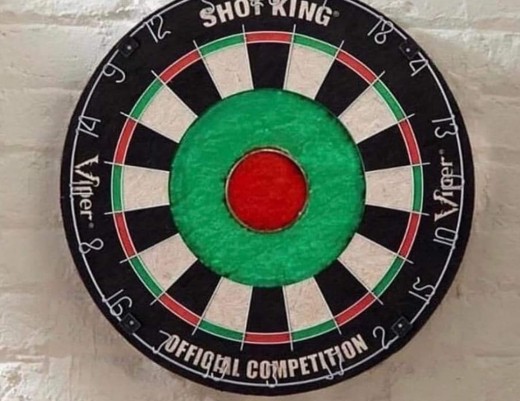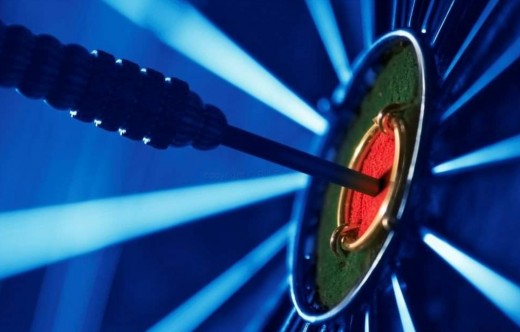December 1, 2000
Column 97
National Darts Hall of Fame!
If you care about the sport of darts you must try to find a way to support the efforts of Jim Poliquin, Jerry Umberger, Laurett Meddis, Ed Edwards, Elli Nicoll and other dedicated dart people to create a meaningful National Darts Hall of Fame (NDHoF). Yep, just like at Cooperstown and Canton there exists a sacred shrine for our sport.
It was sometime back in the middle 1980’s that Poliquin rustled up some friends to throw some Luck’s of the Draw to raise money to help a sick little girl named Sarah Lynn. This effort, which was generously supported by darters, led quickly to a series of similar events, each organized to benefit someone or some organization in need of help. In short order Poliquin’s, now well established, Charity Dart Systems came into being.
The next step in the evolution of the NDHoF took place in 1987. Poliquin again staged a tournament, this time to honor Nick Chantiles upon his retirement. Chantiles had worked tirelessly on behalf of the sport. He’d brought the North American Open to Washington, D.C. and was the first to organize a major women’s-only weekend shoot. Again, Poliquin’s friends turned out en mass. At the close of the tournament Poliquin presented Chantiles with a plaque to commemorate his many contributions to the sport. The inscription: “Nick Chantiles. Hall of Fame.”
And thus began a tradition. Poliquin formally established the NDHoF. He gathered up the friends mentioned above plus a few others — Ron Beans, Michelle Laughridge and Lori Bauernschuh — and has been presenting Hall of Fame awards ever since. The group even sponsors an annual tournament, called the NDHoF Tournament, which will celebrate it’s fifteenth year this coming July 20-22, 2001 in Clarksburg, West Virginia. This past year several television stations covered the shoot. Poliquin was presented the Key to the City of Clarksburg and the NDHoF itself was honored by Senator Robert Byrd with a flag that had been flown over the United States’ Capitol Building. Considering that many tournaments are struggling just to survive, what Poliquin has accomplished is worthy of note.
Since first honoring Chantiles so many years ago, the NDHoF has annually inducted representatives of our sport into it’s hollowed halls, which don’t exactly exist yet in physical form. In fact, according to Poliquin, raising the funds to realize their dream of a “physical Hall to serve as a repository for existing and future memorabilia” is a primary current focus of the group.
Through 1999, nearly 140 players, promoters, behind-the-scene organizers, sponsors and youth have been inducted into the NDHoF. Unfortunately — and here’s the rub — with but a few exceptions, they don’t know quite how they got there.
In fact, as even Poliquin himself realizes, one of the shortcomings of the group’s efforts to date, is the widespread lack of understanding among darters across the country of just what the NDHoF is and how it works. I must admit, I myself am not entirely clear. And I have talked with Poliquin for hours.
It works something like this. Right after the first of each year, notices are either made available or distributed requesting nominations for something called the Official Ballot. Those individuals or leagues which manage to get a hold of one of these notices then recommend deserving individuals, by category, for the Official Ballot. The first problem is that most people never see one of these nomination forms.
Next, from early March through June 15 of each year, ballots are either made available or distributed listing the top six men and women and youth nominated and the top three promoters and sponsors and behind-the-scenes individuals nominated. A second problem is that most people never see one of these ballots either.
Last, at the NDHoF Tournament each year, inductions are made. The top three vote-receivers in each category make the Hall of Fame. The third problem is that the winners seldom understand how they were nominated, how they received votes or how the final selections were made.
Yep, there are problems. People don’t know what’s going on. As hard as Poliquin has been working, he’s been toiling away pretty much by his lonesome to accomplish something significant for our sport. The few recommendations listed below, which I have shared with Poliquin, are therefore, made constructively and with utmost respect for his efforts. Poliquin appreciates the concerns that are out there. He needs our help to move his idea forward.
First, the NDHoF needs to establish some criteria to underpin the nomination process. Currently there are none of which I am aware. Surely, at least some minimum number of years of involvement in the sport should be a qualifier. Some minimum number or percentage of votes cast might be another measure.
Second, the nominating — and balloting — processes need to be greatly expanded. Nomination forms should be mailed or e-mailed to all leagues in January. They should be available in Bull’s Eye News and the Double Eagle.
They should be posted on the Cyberdarts’ ListServe. Similar distribution methods should guide the process of balloting. The current distribution channel is haphazard. The bulk of the nomination forms and ballots seem to find their way to the eastern part of the country. Accordingly, very few of the NDHoF inductees represent the many fine southern, western and northwestern darting communities.
Third, the NDHoF needs to make people aware of it’s existence –it needs to educate darters about what it is and how it works. Changes in nominating and balloting will help and, if distributed primarily via e-mail, will be free. The same distribution process could be used to promote the NDHoF in general and enlighten darters to it’s purpose and procedures.
The NDHoF exists for a noble purpose: to recognize “excellence and outstanding effort” from those involved in our sport and to “solicit the collective opinions” of the wider darting community to identify those most deserving of recognition. What this means is that we all have an obligation to try to make it work. Excellence can’t be fairly recognized and recognition can’t be meaningful unless the whole of the darting community has an opportunity to be involved in the process of nominating and balloting. By the same token, the darting community can’t be expected to embrace a concept, no matter how wonderful it may be, that they don’t completely understand and which has the appearance, at least to some, of being less than impartial.
Yep, there’s a fourth problem. And this sense (as flat-out unfounded as it is) that “something just ain’t right” presents an even greater obstacle to the future of the NDHoF than any of the problems I have already noted. What fosters such a sense? Consider a few examples which have been shared with me …
Since 1987, representatives have been inducted from 19 states, the District of Columbia and four foreign countries (England, Scotland, Thailand and Canada). However, of the NDHoF’s membership through 1999, a whopping 40% are from just three states: Maryland, Pennsylvania and Ohio. Sixty percent of the nation is not represented.
There are only four inductees from the State of Massachusetts, despite the fact that the Minuteman Dart League, with some 10,000 members, is the largest in the nation and has produced some of the best shooters this country has ever sent to the line.
There is only one representative from the State of Texas and it isn’t Luis Martinez, the current National 501 Champion, who has been stomping the sisal in the southwest for years.
Only one inductee hails from Missouri and as deserving as that darter (Steve Brown) is, the absence of another Missourian from the list is particularly conspicuous. The American Darters Association president, Glenn Remick, has been involved in our sport — at a leadership level — for more than two decades. His American Dart League operates in 29 states, has almost 10,000 members and was sponsored by the world’s largest brewery for seven years.
Back in 1982 Remick organized what has become one of the world’s longest running organized darts competitions, the annual telephone match between Northampton, England and Northampton, Massachusetts. And he is the only person who has had hands-on involvement in formulating the rules that govern EACH of the three national darting organizations, the ADO, NDA and ADA, and the rules that their members — all of us — play by. Surely Remick deserves a place in the NDHoF?
What about Jerry Feather from Colorado? Feather’s one of the founding members of the Rocky Mountain Dart Association, one of the three or four largest leagues in the country. He’s the former owner of The Dartboard, once rated by England’s Dart World Magazine as the best darts bar in the ENTIRE WORLD. Surely Feather deserves consideration?
And what about ME?!! I am actually IN the NDHoF. I don’t know how I got there. I don’t know how I got nominated. And it’s not that I don’t appreciate the thought. What I do know is that, with the possible exception of the time I lost a game of cricket to some guy with no arms, I have done absolutely nothing to distinguish myself within our sport.
Don’t get me wrong. The unassailable fact is that Poliquin has a fabulous idea. He’s grown it quickly from nothing to something, with cash from his own pocket and the assistance of a few friends.
But like in baseball and football, just as it is important for our sport to grow its ranks by motivating the next generation of darters through a solid system of youth activities, it is also important to have a very special way of recognizing excellence across our ranks.
Some little town in West Virginia is no less screwy a location for our shrine than Cooperstown or Canton. And, problems, real or perceived, can be solved.
There need to be rules. There has to be awareness. The nominating and balloting process simply must reach out to ALL of the darting community.
We owe it to our sport to try to find a way to help Jim Poliquin.
From the Field,
Dartoid

